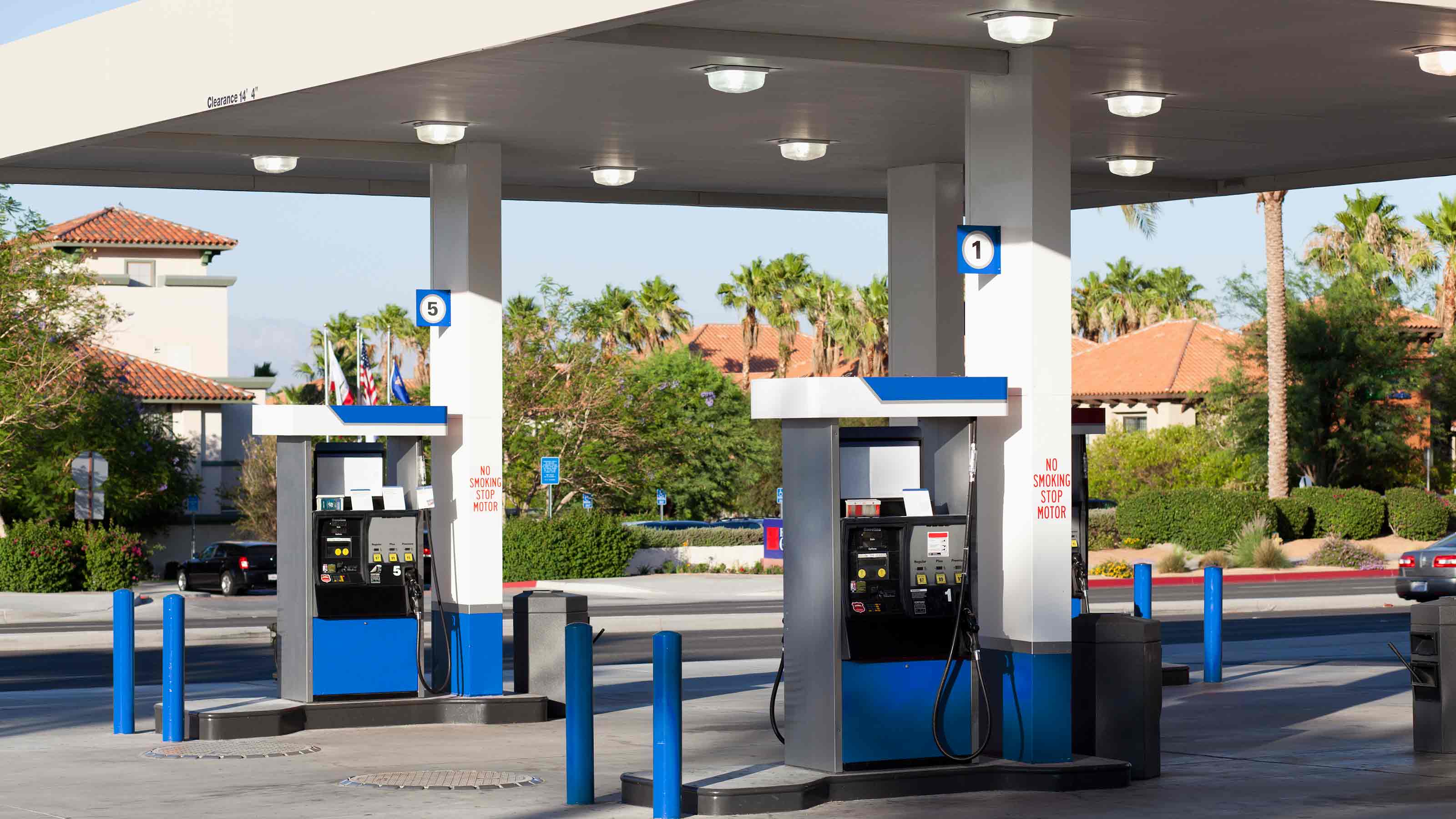Gas Prices Are Going Down, Finally
Most forms of energy should cost less this fall, with one big exception.


After peaking early this summer at more than $5 per gallon, the national average price of regular unleaded has been on a prolonged drop. Last week, the national average slipped below $4, and sits at $3.92 per gallon today. Drivers paying those prices probably aren’t celebrating; gas still costs about 70 cents more per gallon now than it did a year ago. But cheaper is always better. And it’s likely that more price relief is on the way.
The unofficial end of the summer travel season, Labor Day weekend, is almost here. Soon, kids will return to school, and family road trips will taper off, easing demand for fuel. Also, refiners switch from costlier summer-blend gas formulations that are required to meet air pollution standards, to cheaper, winter-blend gas. Meanwhile, crude oil, the biggest factor in determining gas prices, is falling in price, too, as investors bet that an economic slowdown will mean less demand for oil in coming months. If all those trends continue, look for the national average price of gas to slip to $3.50 per gallon before the year ends.
Other types of energy are getting a bit cheaper, too: Namely, propane and heating oil. Both spiked earlier this year when crude oil shot up after Russia invaded Ukraine, and now, both are seeing pullbacks. Again, they’re still expensive compared with last year. However, they should both get a bit cheaper before cool weather arrives, giving consumers a chance to fill up storage tanks at friendlier prices.

Sign up for Kiplinger’s Free E-Newsletters
Profit and prosper with the best of expert advice on investing, taxes, retirement, personal finance and more - straight to your e-mail.
Profit and prosper with the best of expert advice - straight to your e-mail.
One part of their utility bills that figures to really sting a lot of consumers in coming months: Natural gas bills. Unlike crude oil and the fuels refined from oil, natural gas prices have been rising lately, due to strong demand both in the U.S. and in Europe, where buyers are scrambling to find replacements for gas that Russia is no longer delivering. Gas futures contracts traded on financial markets are roughly double their price from this time last year, and could go higher still once cold weather arrives. Since roughly half of American households heat their homes with gas, that means a lot of painfully high bills once furnaces start cranking up.
Get Kiplinger Today newsletter — free
Profit and prosper with the best of Kiplinger's advice on investing, taxes, retirement, personal finance and much more. Delivered daily. Enter your email in the box and click Sign Me Up.

Jim joined Kiplinger in December 2010, covering energy and commodities markets, autos, environment and sports business for The Kiplinger Letter. He is now the managing editor of The Kiplinger Letter and The Kiplinger Tax Letter. He also frequently appears on radio and podcasts to discuss the outlook for gasoline prices and new car technologies. Prior to joining Kiplinger, he covered federal grant funding and congressional appropriations for Thompson Publishing Group, writing for a range of print and online publications. He holds a BA in history from the University of Rochester.
-
 The AI Doctor Coming to Read Your Test Results
The AI Doctor Coming to Read Your Test ResultsThe Kiplinger Letter There’s big opportunity for AI tools that analyze CAT scans, MRIs and other medical images. But there are also big challenges that human clinicians and tech companies will have to overcome.
By John Miley Published
-
 The Best Places for LGBTQ People to Retire Abroad
The Best Places for LGBTQ People to Retire AbroadLGBTQ people can safely retire abroad, but they must know a country’s laws and level of support — going beyond the usual retirement considerations.
By Drew Limsky Published
-
 Roth IRA Contribution Limits for 2025
Roth IRA Contribution Limits for 2025Roth IRAs Roth IRA contribution limits have gone up. Here's what you need to know.
By Jackie Stewart Last updated
-
 Four Tips for Renting Out Your Home on Airbnb
Four Tips for Renting Out Your Home on Airbnbreal estate Here's what you should know before listing your home on Airbnb.
By Miriam Cross Published
-
 Five Ways to a Cheap Last-Minute Vacation
Five Ways to a Cheap Last-Minute VacationTravel It is possible to pull off a cheap last-minute vacation. Here are some tips to make it happen.
By Vaishali Varu Last updated
-
 How to Figure Out How Much Life Insurance You Need
How to Figure Out How Much Life Insurance You Needinsurance Instead of relying on rules of thumb, you’re better off taking a systematic approach to figuring your life insurance needs.
By Kimberly Lankford Last updated
-
 Amazon Big Deal Days Is Coming! We’ve Got All the Details
Amazon Big Deal Days Is Coming! We’ve Got All the DetailsAmazon Prime To kick off the holiday season with a bang, Amazon Big Deal Days runs Tuesday, October 8 and Wednesday, October 9.
By Bob Niedt Last updated
-
 How to Shop for Life Insurance in 3 Easy Steps
How to Shop for Life Insurance in 3 Easy Stepsinsurance Shopping for life insurance? You may be able to estimate how much you need online, but that's just the start of your search.
By Kaitlin Pitsker Last updated
-
 Five Ways to Shop for a Low Mortgage Rate
Five Ways to Shop for a Low Mortgage RateBecoming a Homeowner Mortgage rates are high this year, but you can still find an affordable loan with these tips.
By Daniel Bortz Last updated
-
 Retirees, It's Not Too Late to Buy Life Insurance
Retirees, It's Not Too Late to Buy Life Insurancelife insurance Improvements in underwriting have made it easier to qualify for life insurance, which can be a useful estate-planning tool.
By David Rodeck Published